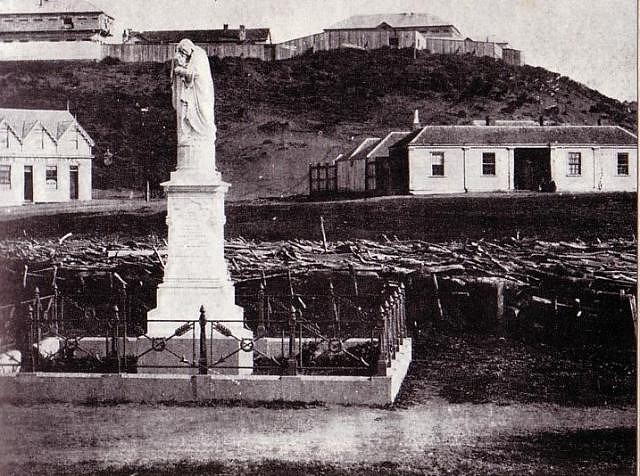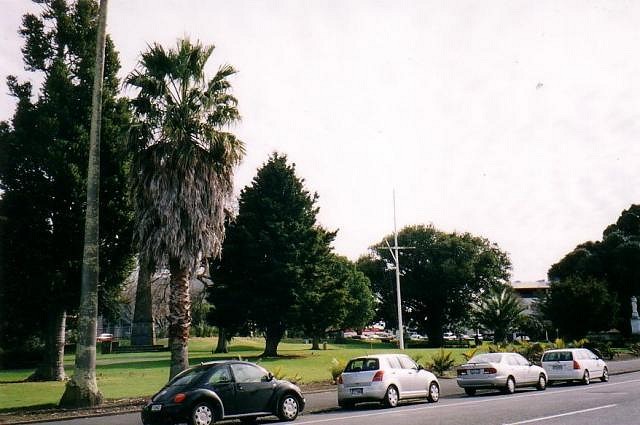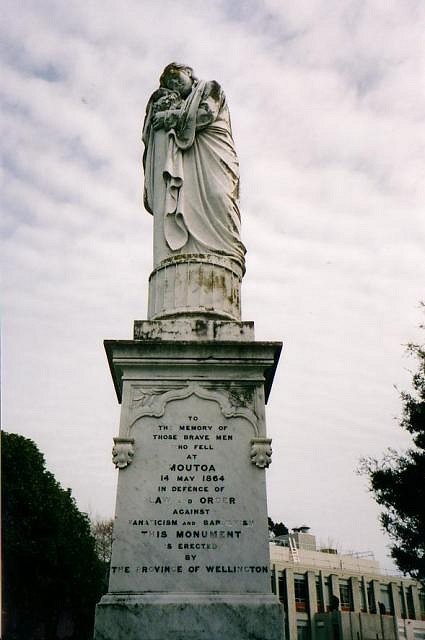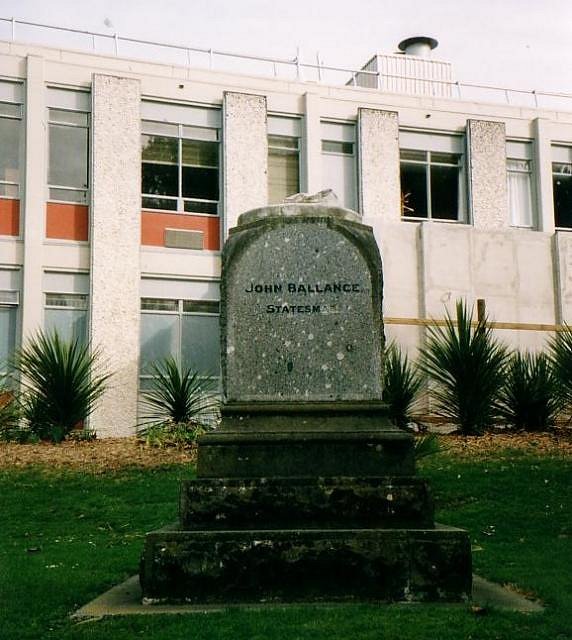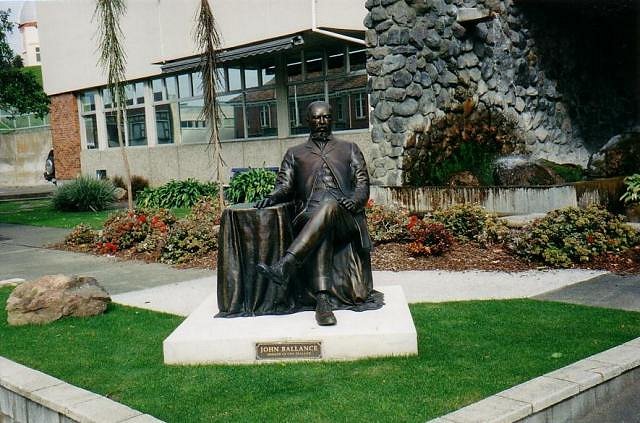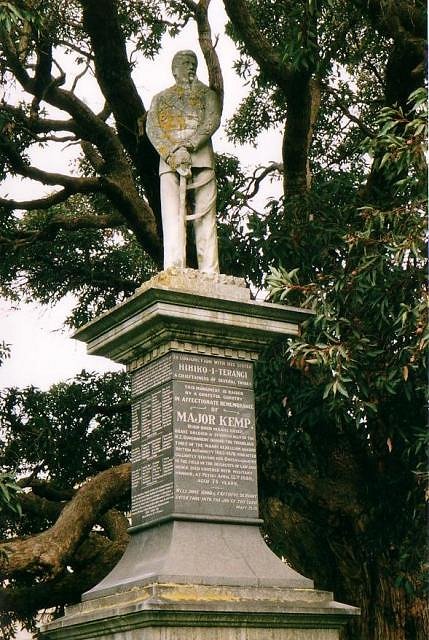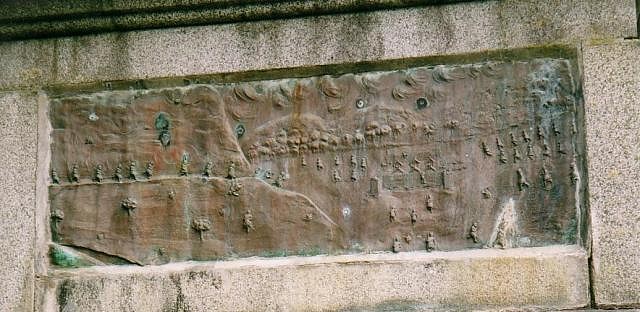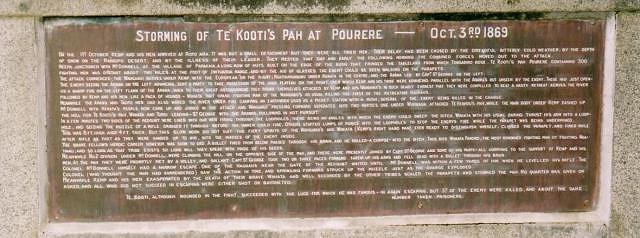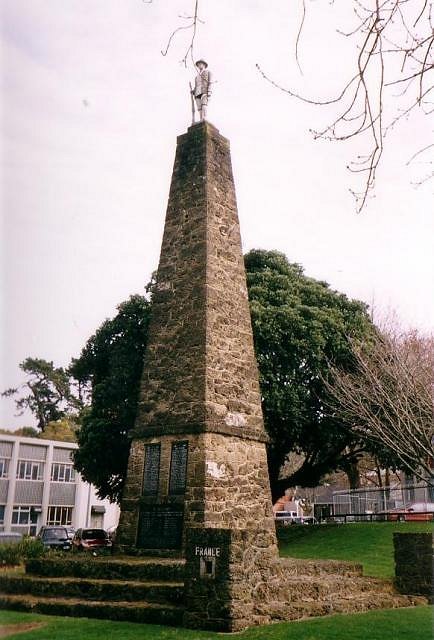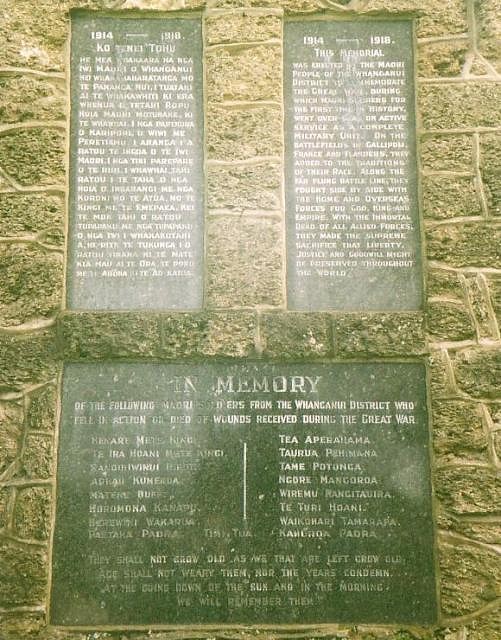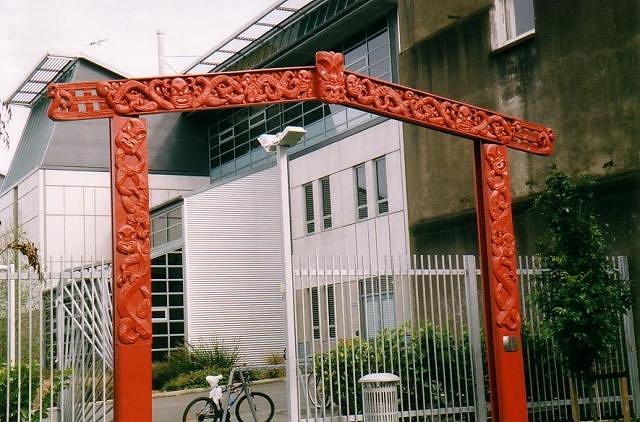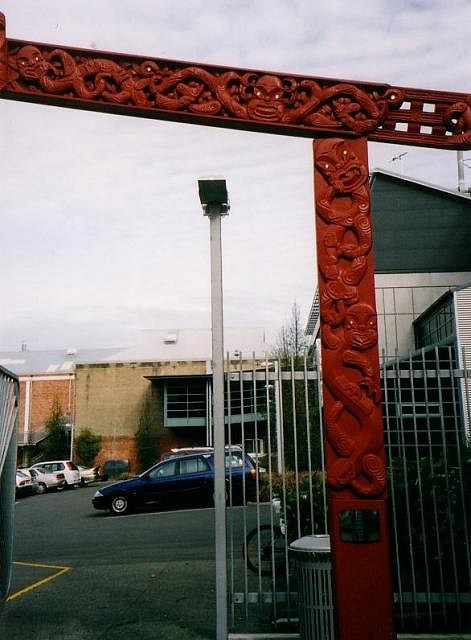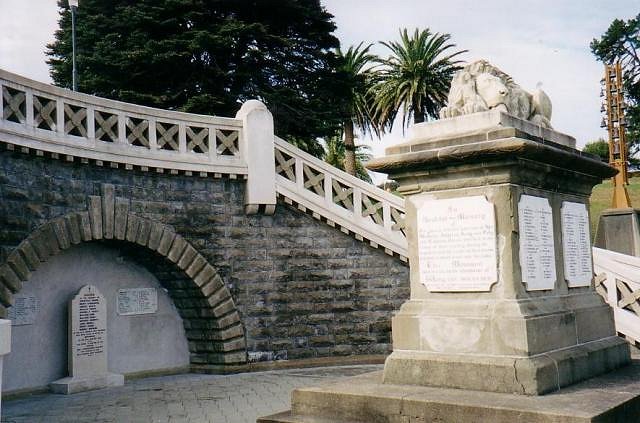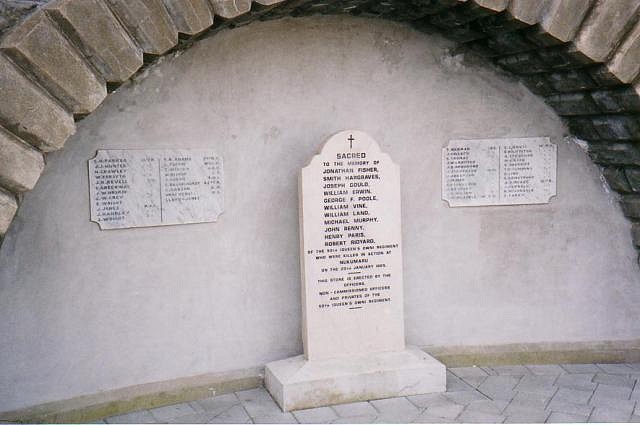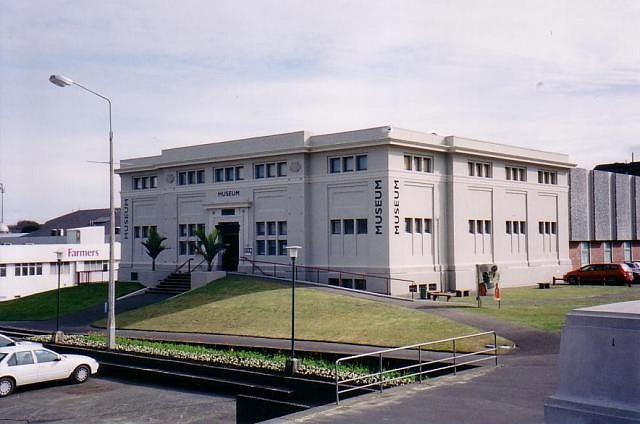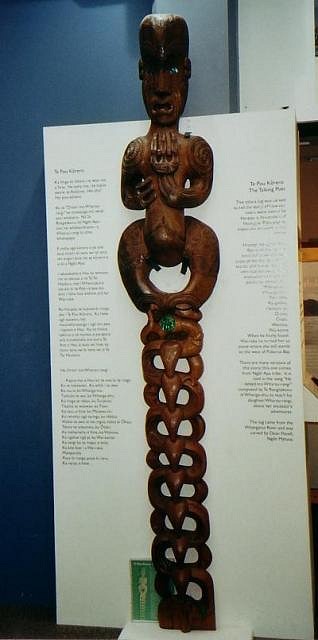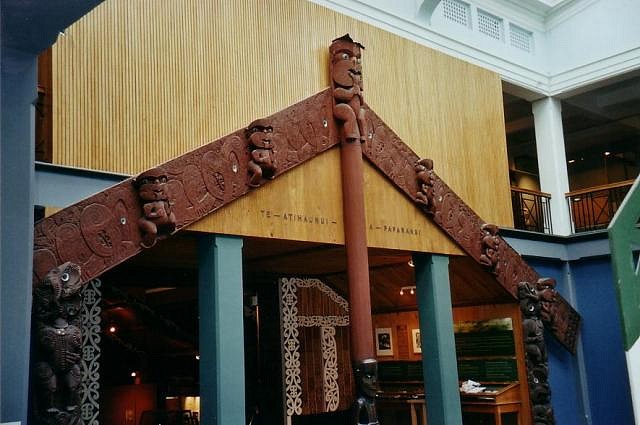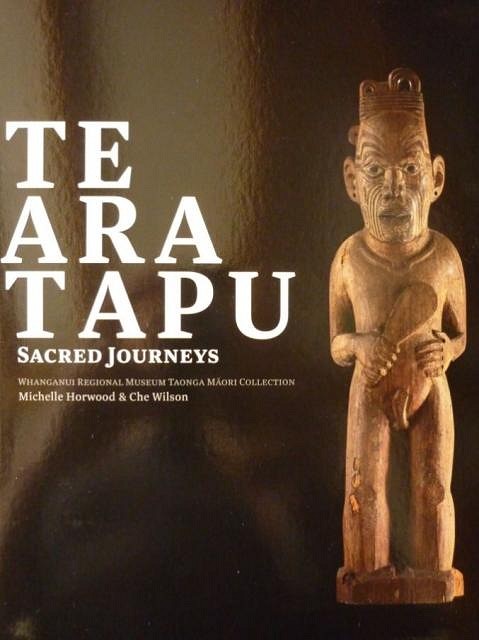Tiki Central / Tiki Travel / Wanganui: The Tiki Tour
Post #550851 by Club Nouméa on Sun, Aug 29, 2010 12:36 AM
|
CN
Club Nouméa
Posted
posted
on
Sun, Aug 29, 2010 12:36 AM
Part 3: From Moutoa Gardens to the Museum Moutoa Gardens is an area right beside the Whanganui River. For hundreds of years, prior to the European town being established in the 1840s, there was a fishing settlement here, called Paikatore. Even after the town centre grew to encompass this area, in the mid to late 19th century, local Maori who lived along the river continued to land their canoes here when visiting Wanganui.
The photo above shows the site in the 1860s. In the foreground is a newly-built statue commemorating the victory in 1864 of lower river Maori over upper river Maori at the battle of Moutoa Island (80km up the Whanganui River). Behind the statue, to the right, is the town courthouse and jail. To the left is Reid's Albion Hotel. Towering over the scene is the Rutland Stockade, a fortification built on Pukenamu Hill (now Queen's Park). The Rutland Stockade was part of fortification works in Wanganui initiated in 1847 in response to upper river Maori, who were becoming hostile to the influx of European settlers that the founding of the town had prompted. By the 1860s, the town's defences had been extended to encompass redoubts upriver in order to forestall any attacks by war parties coming down the Whanganui River, and were put to the test when discontent developed into general conflict in the mid to late 1860s. The River Queen (2005), a film starring Keifer Sutherland, depicts this period of conflict. Although somewhat fictionalised (it refers to an 1860s military campaign on a river named "Te Awa Nui" - The Great River - rather than "Whanganui"), it was filmed in the Whanganui region and is loosely based on actual events that happened there. Further details: http://en.wikipedia.org/wiki/River_Queen Here is what the Moutoa Gardens site looks like today:
The aforementioned statue is just visible on the far right in the photo. Here is a closer shot:
There is little ambiguity about whose side the townfolk were on. Mark Twain, who visited Wanganui in December 1895, was prompted to write the following remarks in his diary after having seen this statue: “Patriotism is patriotism. Calling it fanaticism cannot degrade it… the men were worthy. It was no shame to fight them. They fought for their homes, they fought for their country, they bravely fought and bravely fell; and it would take nothing from the honor of the brave Englishmen who lie under the monument, but add to it, to say that they died in defense of English law and English homes against men worthy of the sacrifice – the Maori patriots”. Moutoa Gardens made the headlines in New Zealand in 1995, when it was occupied by local Maori protesters for 79 days. They declared that the land at Paikatore was Maori land that was not part of the land sale that had resulted in the establishment of Wanganui, and the whole nation watched as the issue was aired in the media spotlight, with the town council on one side and the protesters on the other. After 5 years of discussions, both parties agreed to jointly manage the site in 2000. A prominent victim of the protest action was a statue of John Ballance, which was toppled:
John Ballance was a local newspaper editor in the 1860s, who rose to prominence as a politician, eventually becoming the Premier of New Zealand, leading a Liberal Government from 1891 to 1893. The protesters were possibly unaware of his vocal criticisms of government policy in the land wars of the 1860s, which resulted in him being threatened with a court martial and losing his commission in the Wanganui Yeoman Cavalry, a local militia unit. They were perhaps also unaware of the fact that in 1879 Ballance lost his parliamentary seat as Member for Wanganui due to local Europeans' hostility to his support for the Maori pacifist Te Whiti (more about Te Whiti: http://www.teara.govt.nz/en/1966/te-whiti-o-rongomai-or-erueti-te-whiti/1 ). Such are the ironies of history. The fate of Ballance's statue lay undecided for many years. Marton, a town not far from Wanganui, even offered to take it off the town council's hands. Eventually, earlier this year, a new statue was erected outside the council offices (next door to the tourist information centre):
On the other side of the Moutoa Gardens site is a monument to Te Keepa Te Rangihiwinui, also known as Major Kemp:
His biography: http://www.nzhistory.net.nz/people/te-keepa-te-rangihiwinui The monument commemorates various battles he fought against upper river Maori from 1866 to 1870. On each of the monument's four sides is a bas-relief showing a battle scene, and an account of what happened there:
A stone's throw from the Major Kemp monument is a war memorial to local Maori who died in World War I:
From 1914 to 1918, New Zealand paid a high price in that conflict, and such memorials are to be seen in the smallest of small towns all over the country, but this particular one stands out for two reasons. The first reason is that it is dedicated solely to Maori soldiers, and the second is that it features text in Maori, which was a rarity on public monuments in those days:
Across the road from this monument, where the Albion Hotel used to stand in the 1860s, is this entrance to the local polytech:
This campus only opened a couple of years ago, so these are new carvings:
Moving over to the other side of the hill that the Rutland Stockade once stood on, we come to memorials to British soldiers who fought and died in the 1860s land wars:
And a little further on is Wanganui's largest depository of Maori artifacts, the Whanganui Regional Museum:
In the foyer is a shop that has a good range of books on Maori artifacts and carving, Maori language and culture, and local history. They also sell souvenirs like bone carvings. Across from the shop is this carving, symbolising the Whanganui region and the people who live there:
The museum's main hall is where most of the Maori treasures are to be found, along with a famous collection of 19th-century paintings of local Maori by Gottfried Lindauer (biography: http://www.teara.govt.nz/en/1966/lindauer-gottfried-or-bohumir/1 ):
I would like to show you more, but at this point the camera police descended upon me. Suffice to say, if you want pictures of their extensive collection, you will have to buy the museum catalogue... Which I eventually did:
And well worth the money it is too. It provides details on the history of the museum's Taonga Maori collection, including good coverage of the Gottfried Lindauer paintings, photos of items I have never seen on display, and there is also a CD-ROM with a record of all 4,500 of the taonga (treasures) held by the museum. Also, when you are at the museum, do not miss the exhibits upstairs, which include a new section on the land wars of the 1860s. In the next instalment, we see the inside of an inner-city marae. CN Toto, j'ai l'impression que nous ne sommes plus au Kansas ! [ Edited by: Club Nouméa 2010-08-29 02:00 ] [ Edited by: Club Nouméa 2010-08-29 02:25 ] [ Edited by: Club Nouméa 2011-02-25 21:11 ] |

